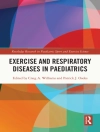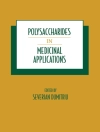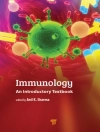Infertility is an important public health problem affecting around 15% of couples worldwide. A male factor contributes to about 50% of all cases of infertility. Male infertility could be related to a variety of congenital or acquired causes that lead to abnormal reproductive potential and poor sperm quality and function. To this date, semen analysis remains the cornerstone of male infertility evaluation. Clinicians widely reference the World Health Organization (WHO) Laboratory Manual for the Examination and Processing of Human Semen, which provides a detailed description of a variety of semen tests. However, the manual does not provide a sufficient clinical context for the various tests that are described.
This book is intended to bridge the gap between the laboratory manual and the clinician by explaining in detail the test indication, its clinical utility, interpretation of results, and presenting a decision algorithm based on the test results. Thebook has 19 chapters grouped under seven sections that follow the chapters of the sixth edition of the WHO manual. Each chapter is written and reviewed by a team of senior clinicians, thus bringing a perspective that is truly clinically relevant. This book will be of great value to all clinicians involved in the management of male infertility and will also be of interest to laboratory scientists involved in semen testing by providing them with clinical perspectives of the test they perform.
Human Semen Analysis: From the WHO Manual to the Clinical Management of Infertile Men is a useful guide for utilizing the WHO manual, interpreting test results, and deciding what subsequent clinical actions to take.
Table des matières
Part 1: WHO manual for Human semen analysis .- Historical view: From 1st to the 6th WHO Manual.-
Part 2: Basic Semen Examinations in Clinical Practice .- Role of semen examination in the couple’s fertility assessment.- Macroscopic parameters (p H, viscosity, odour, volume, hemospermia).- Sperm concentration and Total sperm count.- Sperm Motility.- Sperm Vitality.- Sperm Morphology.- Sperm Agglutination.- Leukocytospermia and Bacteriospermia.-
Part 3: Extended Examinations in Clinical Practice .- Sperm DNA fragmentation.- Genetic screening for sperm aneuploidy by Fluorescent in situ hybridization (FISH) in severe cases of male infertility.-
Part 4: Advanced Examinations in Clinical Practice .- Assessment of seminal oxidative stress.- Acrosome Reaction.- Chromatin Condensation.- Functional analysis of transmembrane ion flux, and transport in sperm.- Computer-assisted semen analysis (CASA).-
Part 5: Sperm Preparation for ART .- Sperm selection techniques.-
Part 6: Sperm Cryopreservatio n.- Sperm Banking.-
Part 7: Future Directions .- On the way to the 7th edition.
A propos de l’auteur
Ashok Agarwal
Director of Research
Global Andrology Forum
Moreland Hills, OH, United States
Emeritus Staff, Cleveland Clinic
Cleveland, OH, United States
Florence Boitrelle
Fertility Preservation and Andrology, CECOS
Poissy Hospital
Poissy, France
Ramadan Saleh
Department of Dermatology, Venereology and Andrology
Sohag University
Sohag, Egypt
Rupin Shah
Division of Andrology,
Department of Urology,
Lilavati Hospital and Research Center
Mumbai, India












